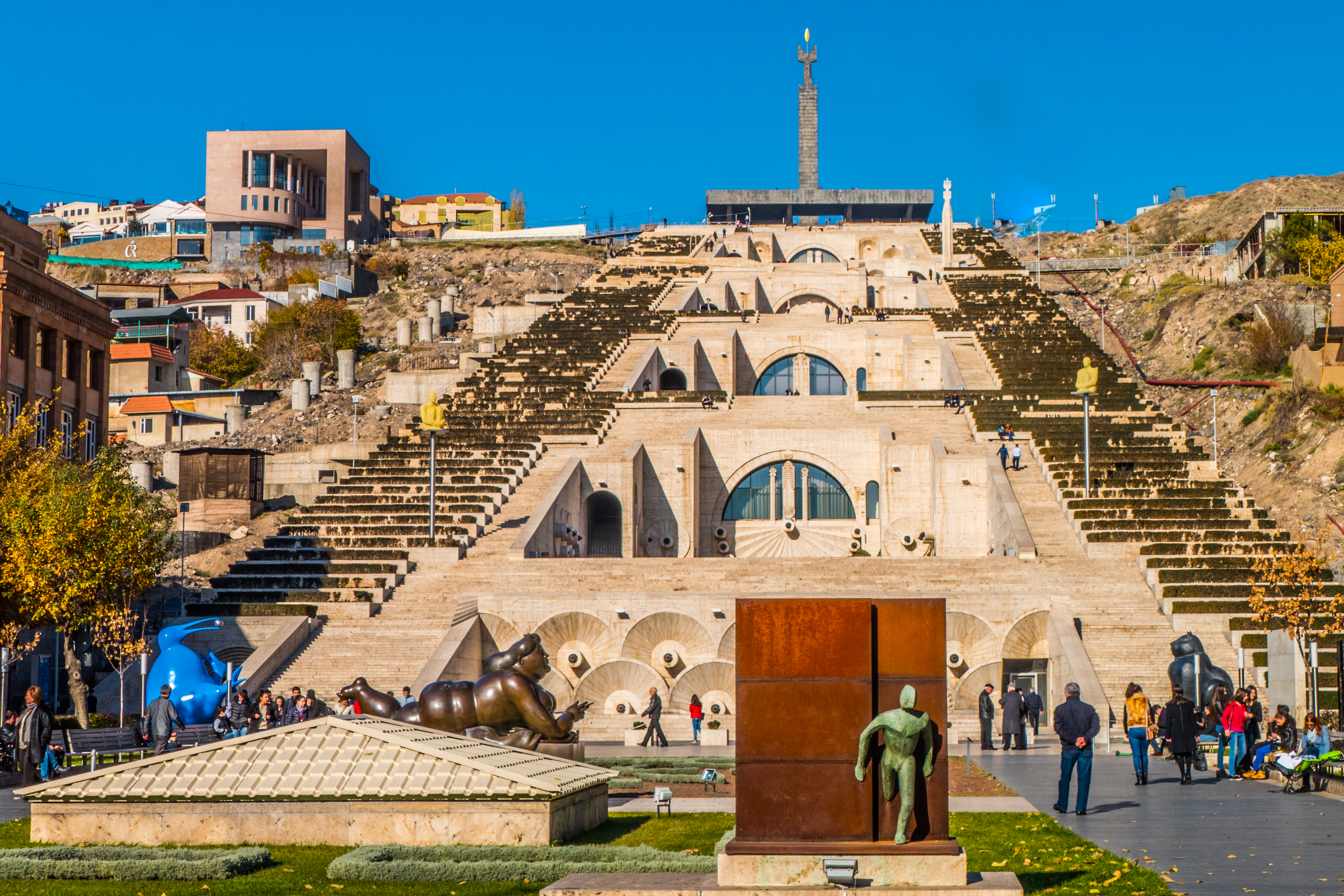
Well, the secret is out—2020 looks like it’s going to be a very busy year for the Armenian tourism industry. This week’s news that the Irish low-cost carrier Ryanair will start flights to Yerevan follows a similar announcement from the Latvian carrier Baltic Air. Prime Minister Nikol Pashinyan, for his part, raved about Booking.com’s inclusion of his country in its list of ‘Top 10 Tourist Destinations in 2020’ as proof that Armenia is finally reaching out of its relative obscurity and onto the maps of many adventure tourists.
Armenia has certainly become ever more popular with tourism-focused publications lately. Hardly a week goes by without the tiny republic finding its way onto lists of ‘most affordable destinations in the world,’ or having ‘one of the world’s most beautiful parliament buildings,’ ‘Europe’s best-kept secret‘ and so on.
According to Susanna Safaryan, who heads the Armenian Tourism Committee, Armenia’s newfound publicity is well deserved. The country is hospitable, safe, affordable, accommodating, culturally rich and offers a diversity of activities for visitors.
Indeed, this coverage seems to be working. The number of tourists coming to Armenia has skyrocketed over the last two years. And they’re spending more too. According to Artur Javadyan, chairman of the Central Bank of Armenia, tourists have spent 75 percent more in restaurants this year than the last, 32 percent more in hotels and 30 percent at supermarkets.
According to data collected by the government, the average tourist once spent $730 during a trip to Armenia. In 2019, the figure has jumped to $880. The same study also demonstrates that the Armenian market has adapted to meet this new demand for tourists. Over the past six years, over 300 hotels have opened across Armenia.
Last year, Armenia saw a record high with 1.6 million inbound tourists. The number is likely to cross the two million mark by the end of 2019. While the majority of these are ethnic Armenians visiting from the Diaspora, an increasing number are coming from the Philippines, China, Japan, Western Europe and North America, and they are engaging in all sorts of activities that were not available until recently: ecotourism, hiking, off-roading and gastro-tourism.
More and more tourists are visiting the regions outside of Yerevan as well, where they contribute to the local economies by staying in bed and breakfasts, buying food, renting cars and hiring local guides. These expenses are a little harder to track though.
Armenia is evidently benefiting from the tourism boom. Tourists have poured almost $1.8 billion into the economy, or 16 percent of the country’s GDP last year alone, and support an estimated 45 thousand jobs across the country.
However, tourism does have its downsides. Evidence from other countries with tourism-focused economies reveals some of the unforeseen negative externalities which Armenian policymakers should be careful to account for.
While tourism definitely creates jobs, these jobs, despite requiring some skill, tend to offer low wages and few opportunities for advancement. On top of that, the industry remains highly seasonal and extremely susceptible to certain threats such as war, terrorism, ecological changes and so on.
Additionally, the sudden influx of large numbers of tourists in a small, relatively isolated conservative country with little infrastructure to support them has been cause for social strife and even xenophobia. Locals may resent the loss of a certain living standard of lifestyle as the country reorients itself toward catering to tourists. Overtourism is already taking its toll. Cities across Europe have been hit by a wave of anti-tourist demonstrations lately, one of which even taking place in nearby Tbilisi.
In Yerevan, a recent spike in apartment purchases by Diasporan Armenians since last year’s Velvet Revolution has led to real estate speculation, a hike in rental prices and fears that locals may soon be priced-out by ‘repatriate gentrifiers.’
Armenia is right to embrace the incoming tourism boom which it is now poised to benefit from. For policymakers in Yerevan however, the key is to channel those gains into promoting a diversified, high-value economic productivity, while putting the right infrastructure in place to ensure that sustainable tourism remains mutually beneficial for visitors and locals alike.


Great article! I am totally looking forward to visit Armenia. I hope the country will be able to growth sustainably and goverment invest its taxed money in infrastructure without losing its beautiful culture and charm.
A very good article. Optimistic but well balanced and informative. Well done Raffi.
Can’t wait to visit Armenia.
Very informative and balanced written article..
like to see more about Armenia in a future
Thank you
Raffi— this is a really good point that I have been banging on for a while. My concern relates to environmental degradation and urban planning.
We came this summer and loved it. My wife and I hadn’t been in over 15 years. The changes were impressive and everywhere we went we encountered people from countries far and wide enjoying our homeland.
Agreed that policy-makers must adopt a thoughtful approach as they consider the pros/cons of increased tourism.
Thank you Raffi!
Valid concerns; and now that we’re all aware of the possible négative outcomes we can start planning on how to mitigate them.
Soon we’ll have to book for entering our monasteries? Already foto-safaris in ceremonies in Geghard or Airiwank have replaced the calm of our prayers and authentic songs.
The buildings mostly in tuffstone, as example Norawank can not manage thousands of feet and hands. OK tourists and good tourists but not the masses flown in on cheapest ways but ignoring where they are …